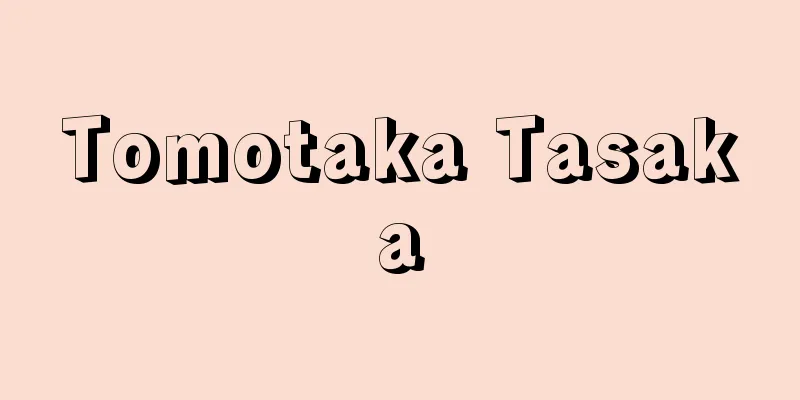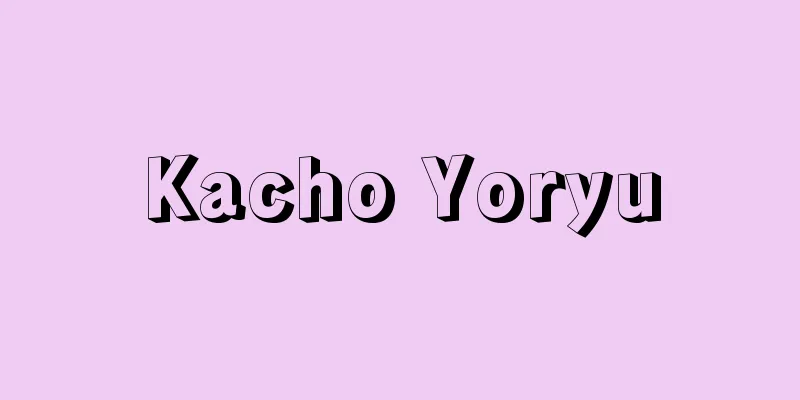Accessories - Accessories

|
A clothing accessory attached to the body or clothing for decoration. It corresponds to the English word "personal ornament" (or simply "ornament"), and small accessories are called "trinkets." Although the word "trinket" is usually used synonymously with "accessory," strictly speaking it is a category of accessory. In general, ornaments are more decorative than practical, are a part of clothing but not essential, and make the clothing more effective and complete. For example, ornaments refer to highly decorative clothing accessories (clothing crafts) such as brooches, pins, necklaces, bracelets, earrings, rings, hair ornaments, and corsages. In the broad sense, accessories include not only these ornaments, but also practical clothing accessories such as shoes, gloves, handbags, hats, and parasols, as well as handcrafted trimmings such as ribbons, braids, beads, and decorative buttons. However, the term accessories is generally used to refer to only ornaments, or to ornaments and decorative clothing accessories with a strong fashion sense (belts, scarves, glasses, key holders, lighters, etc.). Ankles, collars, and nose rings, which are often used in primitive societies, may have special meanings other than decoration depending on the group, but they are generally considered to be ornaments. [Hirano Yuko] jewelryAmong accessories, jewelry made of precious stones and metals is called jewelry, bijou in French, and Edelsteine in German to distinguish it from other items. It is jewelry craft, that is, jewelry accessories. Moreover, super high-class jewelry accessories mainly made of precious stones are called high jewelry. Costume jewelry is imitation jewelry, and in contrast to real jewelry, it refers to inexpensive accessories made of base metals inlaid with imitation glass or semi-precious stones. Originally, it was an imitation to match special costumes such as stage costumes and historical costumes. After World War I, the value of jewelry changed significantly, and the beauty of the appearance, such as color and shape, came to be emphasized rather than the value of the gemstones and precious metals, and it has been used in a unique way to this day as an expression of a dramatic atmosphere, a novel feeling, and an unusual idea. It was Chanel who introduced costume jewelry into the world of fashion in the 1950s, when she began using multi-strand necklaces made up of a mixture of expensive gemstones, imitation gemstones, and cheap glass beads with ordinary tweed suits and jersey pullovers. [Hirano Yuko] historyMost ornaments are believed to have preceded clothing, originating from primitive religions and magic, and gradually developed into body decoration. The basic forms of modern ornaments were already established in prehistoric times. In the early stages, birds, animals, fish, shellfish, plants, and all sorts of things suitable for decorating the body must have been used as ornaments. Then, pebbles appeared, and ornaments made from pebbles and inorganic metals were used, and ornaments as crafts were born. The transition from the Neolithic to the Bronze Age was in some ways a golden age for ornaments, and ornaments began to develop rapidly. In the historical period, ornaments showed further development in terms of materials and techniques, while becoming more complex and elaborate. Over the long history, various decorative designs appeared, influenced by the clothing styles of each era. Decoration reached its peak in the 19th century in England during the Victorian era, ushering in an era of excessive decoration that could be described as saturation. Delicate and elaborately designed jewelry became popular, a trend that continued into the Art Deco era of the 20th century. After World War I, the equalization of values extended to jewelry, and its value as a possession was disregarded, and accessories moved into the era of costume jewelry. As simplified clothing styles were established, accessories began to be valued for their subordinate value, and materials, designs, and techniques became increasingly diverse, a trend that continues to this day. [Hirano Yuko] Today's AccessoriesThe greatest appeal of accessories is that they place great importance on expressing individuality, and people can choose designs and colors that suit their own sensibilities. One challenge is to vary accessories to suit different purposes, and new styles of dressing that are not bound by traditional styles are being tried. To express a cool, modern sensibility, simple plastic or metal items are used casually, colorful items with a pop feel are fun, or natural materials such as ivory and wood are used for a stylish look. A new trend is the sale of designer brand accessories that are created to match the overall image of the clothing. Generally, the most popular styles are wild and large, romantic items with delicate and intricate designs, and ultra-modern accessories made from new materials. [Hirano Yuko] Jewelry from an ethnological perspectiveMost accessories were created before clothing as protective charms. In ancient or primitive societies, people believed that illness, injury, death and other disasters were caused by evil spirits entering the human body, and to prevent this, they placed charms on holes and passages in the body that were considered to be the entrances. These were earrings, nose ornaments and necklaces. This would be considered preventive in modern terms. Next, it was believed that each part of the human body was managed by a living spirit, and that these living spirits would forget their work and go out to play, and evil spirits would enter during their absence and cause illness. Therefore, in order to confine the living spirits inside the body and have them focus on managing their body, people would tie or ring the main parts of the body with strings. These were headbands, chest ornaments, waist ornaments, arm straps or bracelets, rings and ankle bracelets, and would be considered health management in modern terms. Because the human body is vulnerable to danger when in contact with supernatural powers, such charms were placed on various parts of the body, especially on festival days. This is how the prototype of jewelry was created. However, humans still cannot prevent injury, illness, and death. So people tried to strengthen the effectiveness of their protective charms. That is, they tried to use precious materials, decorate them to make them stand out, or add lion's manes, animal horns, bird feathers, etc. to strengthen their fighting power. However, only the ruling class of a society could do these things, so high-quality and luxurious charms also became status symbols. In other words, by using materials that were valuable and decorating them with luxurious ornaments, charms became accessories. This was also a transition from charms to accessories. On the other hand, some items that were once merely practical have become accessories by selecting materials and adding decorations, such as combs, hairpins, walking sticks, and cases for holding amulets. In short, ornaments were born when treasures or decorative elements were added to magical or practical items, and when beauty and grandeur were emphasized. [Mitsusada Fukasaku] Jewelry of various ethnic groupsIn Oceania, dog and pig tusks, and dolphin and bat teeth are highly valued and made into necklaces. Beads made from shells and beautiful nuts are also strung together and worn around the neck or torso. In New Guinea, beautiful feathers from the bird of paradise and cassowary are used to decorate the head, kangaroo tails hang from the chest, and bone rods or carved shells are used to decorate the nose. Large shells are hung from the chest. In Africa, cowrie shells and beads are used extensively. However, unlike Oceania, the beads are made of glass, so some are blue. The body is decorated with a mixture of nuts, including hair ornaments, headbands, ear ornaments, nose ornaments, necklaces, arm ornaments, waist ornaments, foot ornaments, and sash-style waist ornaments. The most impressive of these are the huge three-tiered disc-shaped necklaces worn by the Masai women and the cowrie shell masks worn by the Dogon people. Dragonfly beads are also popular. Meanwhile, jade stones such as carnelian, turquoise, crystal, agate and pearls have been excavated from ruins of the Uruk period in Mesopotamia, said to be the birthplace of civilization, as well as a golden garland from the tomb of Queen Siep-Ad, dating back to 2000 B.C. Ancient Egyptians are known for their crowns with towering sculptural decorations high above the head and large, bib-like necklaces made of lavish gold, ceramics, beads and colored stones such as carnelian. These designs are found on the back of King Tutankhamun's throne, and are familiar to us today. In ancient India, as seen in sculptures and paintings of Hindu goddesses, heads, noses, ears, necks, chests, waists, arms, and legs were lavishly decorated with gold and jade. A unique feature was that a hole was drilled in one of the wings of the nose and gold or jade was inserted into it. In China, 3,000 years ago during the Yin dynasty, white or blue jade necklaces were made, but in the Zhou dynasty, waist ornaments (haigyoku) made of agate and other jade became popular, and in the Qin and Han dynasties, luxurious buckles (belt hooks) made of copper with gold and silver, jade, glass, and green pine became popular instead of haigyoku, and accessories such as hair ornaments, earrings, bracelets, and rings made of jade, gold, and silver were popular. After that, earrings disappeared from China, but it is noteworthy that they were revived during the Qing dynasty, which was of Manchu origin. In Japan, during the Jomon period, ornaments included combs made from bamboo or bone, small clay beads or circular earrings, shell bracelets, and ornaments (whether they were necklaces or waist ornaments) that were hung from holes drilled into pieces of shell, bone, horn, or stone. During the Yayoi period, with increased traffic with the continent, ornaments made from jade and stone, such as magatama and kudatama, gilt bronze crowns and earrings, and gold rings also appeared. Ornaments and jade staffs also appeared. During the Kofun period, beautifully colored ornaments made from jade, agate, glass, and other materials appeared. We have looked at the accessories of so-called primitive and ancient societies, but it goes without saying that accessories change as cultures develop. Some accessories, such as nose ornaments, have fallen out of use, but it is interesting to note that people still wear accessories in places where they once wore magical items. [Mitsusada Fukasaku] "Etsuya Miyamoto, 'The Fashion Studies of Accessories' (1981, Fashion Studies Institute)" ▽ "Haruichi Kitayama, 'Fashion and Power' (1985, Sanseido)" [Reference items] | | | | |Source: Shogakukan Encyclopedia Nipponica About Encyclopedia Nipponica Information | Legend |
|
装飾のために身体や衣服につける服飾付属品。英語のパーソナル・オーナメントpersonal ornament(または単にオーナメント)にあたり、こまごまとした小さい装身具はトリンケットtrinketとよばれる。通常、装身具の語はアクセサリーと同義に用いられることが多いが、厳密にはアクセサリーの一分類である。 一般に装身具は、実用よりも装飾を目的とし、服装の一部ではあるが不可欠なものではなく、それがあることによって服装をより効果的により完璧(かんぺき)にするものである。たとえばブローチ、ピン、ネックレス、ブレスレット、イヤリング、指輪、髪飾り、コサージなどの、装飾性の強い服飾付属品(服飾工芸品)をさす。広義のアクセサリーには、これら装身具のほかに、靴、手袋、ハンドバッグ、帽子、パラソルなどの実用を目的としている服飾付属品と、さらにリボン、ブレード、ビーズ、飾りボタンなどの手芸的なトリミングが含まれる。しかし一般にアクセサリーの語は、装身具のみを、あるいは装身具とファッション性の強い装飾的な服飾小物類(ベルト、スカーフ、眼鏡、キーホールダー、ライターなど)をさすのが習わしとなっている。原始的社会でしばしば用いられる足輪、首輪、鼻輪などは、その集団によっては装飾以外に特別の意味合いをもつものもあるが、一般にはこれらも装身具として考えられる。 [平野裕子] ジュエリー装身具のうち、宝石や貴金属製のものをとくにジュエリーjewel(le)ry、フランス語ではビジューbijou、ドイツ語ではエーデルシュタインEdelsteineとよんで、ほかのものと区別している。宝飾工芸品すなわち宝飾品の装身具である。また宝石を主体とした超高級な宝飾品の装身具はハイ・ジュエリーとよばれている。コスチューム・ジュエリーは模造装身具のことで、本物のジュエリーに対して、模造品のガラスや準宝石をはめ込んだ卑金属製の安価な装身具をさす。もともとこれは舞台衣装や歴史服などの特殊なコスチュームにあわせたイミテーションであった。第一次世界大戦後ジュエリーの価値感が大きく変化し、宝石や貴金属としての価値よりも、色や形などの外観の美しさが重視され、劇的な雰囲気、斬新(ざんしん)な感覚、奇抜な着想などの表現として、今日まで独特の用い方がされてきた。なお、コスチューム・ジュエリーをモードの世界に持ち込んだのは、1950年代のシャネルで、なんの変哲もないツィード地のスーツやジャージーのプルオーバーなどに、高価な宝石も模造宝石も安物のガラス玉も全部いっしょにした何連ものネックレスを用いたのが始まりである。 [平野裕子] 歴史装身具の多くは衣服に先行するものとされ、原始宗教や呪術(じゅじゅつ)に始まって、しだいに身体装飾として発展したものと考えられる。今日的な装身具の基本の型は、すでにほとんどが先史時代に確立していた。初期の段階では、おそらく鳥獣、魚貝、植物など、身を飾るにふさわしい、ありとあらゆるものが装身具として役だっていたに違いない。ついで玉石が登場し、玉石と金属類の無機物による装身が行われ、工芸品としての装身具が誕生した。新石器時代から青銅器時代への移行は、ある意味で装身具の黄金期へ向かうものであり、装身具は急速な発展をみせるようになる。歴史時代に入ってからの装身具は、素材、技法の面でいちだんの発展を示す一方、複雑さや入念さが増してくる。長い歴史のなかで、それぞれの時代の服型の影響を受けながら、さまざまな装飾デザインが登場した。19世紀イギリスのビクトリア朝でその装飾は最高潮に達し、飽和状態ともいえる装飾過多の時代を迎える。繊細で凝ったデザインのジュエリーがもてはやされ、この傾向は20世紀のアール・デコの時代まで続く。第一次大戦後、価値の平等化はジュエリーにも及び、これまでの財産としての価値は軽視され、装身具はコスチューム・ジュエリーの時代に移行する。単純化された服型が確立すると、装身具はその従属的な価値がより重視されるようになり、素材、デザイン、技法はますます多様化し今日に至っている。 [平野裕子] 今日の装身具個性の表現にもっとも重きを置き、自分の感覚にあったデザインや色を選ぶことが装身具の大きな魅力となっている。目的にあわせて変化をもたせることが一つの課題で、従来の装いにとらわれない新しい装い方が試みられている。クールな現代感覚の表現として、プラスチックや金属のシンプルなものをさりげなく用いたり、ポップ調のカラフルなものを楽しく、あるいは象牙(ぞうげ)やウッドなどの自然素材をしゃれた感じに用いたりする。新しい傾向としては、衣服とトータルなイメージでつくられたデザイナーズ・ブランドの装身具が売られている。一般に野性的でビッグなもの、繊細で凝ったデザインのロマンチックなもの、新しい素材の超モダンな装身具などが流行の主流となっている。 [平野裕子] 民族学からみた装身具装身具の大半は、護身用呪具(じゅぐ)として衣服に先行して生まれた。すなわち、古代あるいは原始的社会では、病気、けが、死などの災禍は、悪霊が人体に侵入しておこすものと考え、その防止のため、侵入口とみなされる人体の穴の部分や通路に、侵入阻止の呪具をつけた。耳飾り、鼻飾り、首飾りがそれである。これは、今日的にいえば予防にあたる。次に、人体各部にはそこを管理する生霊がいるのだが、これら生霊たちは仕事を忘れ体外に遊びに出て、その留守中に悪霊が入り込み病禍をおこす、と考える。そこで、生霊を体内に閉じ込め身体管理に専念させようと、身体の主要部位を紐(ひも)で縛ったり輪をかけた。これが、鉢巻、胸飾り、腰飾り、腕紐または腕輪、指輪、足輪であり、今日的にいえば健康管理にあたる。超自然力に接するとき人体はねらわれやすく危険なので、このような呪具を、とくに祭礼の日には身体の各所につけた。こうして装身具の原型ができた。 しかし、それでも人間は、けが、病気、死を防ぎきれない。そこで護身の呪具の効力を強化することを考えた。すなわち、この世で貴重なものを材料にしたり、装飾化して目だつようにしたり、ライオンのたてがみや動物の角(つの)や鳥の羽などをつけ自分の戦闘力を強化しようとした。しかし、それらを十分にできる者たちは、その社会の支配層の人々に限られるので、高級で豪華な呪具はステータス・シンボルにもなっていく。すなわち、このように呪具は、財宝的なものを材料に使用したり豪華な装飾を施すことによって、装身具となる。呪具から装身具への転換でもある。 一方、単に実用品にすぎなかったものにも、材料を選び装飾を施すことによって装身具となったものがある。たとえば、櫛(くし)、かんざし、杖(つえ)、御守り入れケースなどである。 要するに、呪具あるいは実用品に財宝的あるいは装飾的要素が加わり、りっぱさや美しさが重視されることにより、装身具は生まれた。 [深作光貞] 諸民族の装身具オセアニアでは、犬やブタの牙(きば)、イルカやコウモリの歯が珍重され、首飾りにする。貝殻からつくるビーズや美しい木の実も数珠(じゅず)つなぎにして、首に巻いたり胴を飾り巻いたりする。ニューギニアでは、ゴクラクチョウやヒクイドリの美しい羽根で頭を飾りたて、カンガルーのしっぽを胸に垂らし下げ、鼻には骨を棒状に差し渡したり、彫刻した貝を飾ったりする。胸には大きな貝をぶら下げる。 アフリカでは、タカラガイとビーズが多用される。ただし、オセアニアと違ってビーズはガラス製なので、青色のものもある。頭髪飾り、鉢巻、耳飾り、鼻飾り、首飾り、腕飾り、腰飾り、足飾り、襷(たすき)掛け式の胴飾りなど、木の実も混ぜて身体を飾りたてるが、なかでもマサイ人の女性の三段式円盤形の巨大な首飾りと、ドゴン人のタカラガイ製の仮面とがとくに圧巻である。蜻蛉玉(とんぼだま)も愛用される。 一方、文明の発祥地といわれるメソポタミアのウルク期の遺跡からは、紅玉髄(こうぎょくずい)、トルコ玉、水晶、めのう、真珠などの玉石類や、紀元前2000年のシエプ・アド王妃の墓から黄金の花冠などが発掘されている。古代エジプトになると、頭上に高く彫刻的装飾がそそり立つ冠と、金や陶器やビーズやカーネリアンなどの色石を豪華に使ったよだれ掛け状の大きな首飾りが印象的である。これらは、ツタンカーメン王の玉座背面の図柄で、われわれにもなじみ深い。 古代インドでは、ヒンドゥー教の女神たちの彫刻や絵画でもわかるように、頭も鼻も耳も首も胸も腰も腕も足も、やたらに黄金や玉石で飾りたてている。特異なのは、片方の鼻翼に穴をあけ黄金か玉石をはめ込むことであろう。中国では、3000年前の殷(いん)代に白玉や青玉製の首飾りがあるが、周代になると、めのうなどの玉石を使った腰飾り(佩玉(はいぎょく))が盛んになり、秦(しん)・漢代になると、銅に金銀、玉、ガラス、緑松石などをちりばめた豪華なバックル(帯鉤(たいこう))が、佩玉にかわって流行し、玉石・金銀を使用した髪飾り、耳飾り、腕輪、指輪などの装身具が愛用された。それ以後、中国では耳飾りは姿を消すが、満洲民族出身の清(しん)朝で復活することが注目される。 日本では、縄文時代に竹製や骨製の櫛、土製の小玉あるいは環状の耳飾り、貝製の腕輪、貝片や骨角や石に穴をあけて吊(つ)るす垂れ飾り(首飾りか腰飾りかは不明)などの装身具があった。弥生(やよい)時代になると、大陸との交通も進み、勾玉(まがたま)や管玉(くだたま)などの玉石製の首飾り、金銅の冠や耳飾りや金の指輪も現れる。佩飾や玉杖(ぎょくじょう)も現れる。古墳時代になると、翡翠(ひすい)、めのう、ガラスなどの美しい色彩の装身具が出現した。 以上、いわゆる未開社会や古代社会の装身具をみてきたが、文化の発達とともに装身具も変化していくことは、いうまでもない。鼻飾りのように廃れてしまったものもあるが、かつて呪具をつけたところにいまでも装身具をつけていることは興味深い。 [深作光貞] 『宮本悦也著『アクセサリーの流行学』(1981・流行学研究所)』▽『北山晴一著『おしゃれと権力』(1985・三省堂)』 [参照項目] | | | | |出典 小学館 日本大百科全書(ニッポニカ)日本大百科全書(ニッポニカ)について 情報 | 凡例 |
<<: Rice porridge - Rice porridge
>>: Search for the Gods - Search for the Gods
Recommend
Crown
…He became embroiled in political struggles in hi...
Lightweight seat - Karumonoza
A group of merchants who engaged in privileged tra...
Liquid Helium II - Equilibrium Helium
… Liquid 4He , or liquid helium-4, transitions to...
Mt. Makimukuyama
A mountain in Sakurai City, Nara Prefecture. It is...
Clock - Tokei (English spelling) watch
A clock is a device that indicates time or measur...
sakoraw
...There is a custom of calling "Yukara of t...
Ebola hemorrhagic fever (Ebolavirus disease)
What kind of infection is it? At the end of June ...
Territory - Ryodo (English spelling) territory
It refers to the land portion of a nation's t...
Strangeways, TPS (English)
…In 1925, Maximow A. Maximow, in the culture of t...
Urania (Divine Name) - Urania
...The center of worship was Mount Helikon in Pie...
Kauai [island] - Kauai
An island in the northwest of Hawaii, USA. A volca...
Colloquial style - Kougoutai
A style of writing based on modern spoken language...
Collared short armor - Collared short armor
…The shapes of the individual iron plates that ma...
Nansei [town] - Nansei
An old town in the southern part of the Shima Peni...
Coral crab - Sangogani (English spelling)
This crab belongs to the order Decapoda of the cl...









